Cloak and Dagger Theory in Peter Eisenman Houses covers the apparent ‘rules’ of geometrical composition underlying the design of plan in early houses by architect Peter Eisenman. The effect of these compositional rules, tied to the design process of ‘decomposition’ as described by Eisenman, in the generation of layout in these houses is examined using some basic representational techniques in the space syntax toolkit. 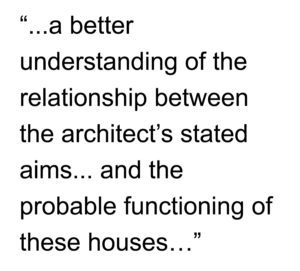 In particular, this includes the effect in structuring the relationships, if any, between public (e.g. everyday living) and private (e.g. bedrooms) functions as well as the household interface between inhabitants and visitors. The course offers a better understanding of the relationship between the architect’s stated aims in his own theoretical writings and the probable functioning of these houses as architectural objects (1.0 hour course).
In particular, this includes the effect in structuring the relationships, if any, between public (e.g. everyday living) and private (e.g. bedrooms) functions as well as the household interface between inhabitants and visitors. The course offers a better understanding of the relationship between the architect’s stated aims in his own theoretical writings and the probable functioning of these houses as architectural objects (1.0 hour course).
NOTE: This course does make use of some basic space syntax analysis. However, even if you are not familiar with space syntax, it should not be considered a deterrent.
Key concepts: architectural theory, composition, deconstructivism, domestic functions, plan geometry, genotypes.
Instructor: Dr. Mark David Major, AICP, CNU-A
Check here to purchase this course ($9.99), which includes an one-hour video presentation and PDFs of the course supplementary materials and slide handout.
Note: We are beta-testing with these our course offerings so if you have any issues accessing the course material, please do not hesitate to contact us at [email protected]. Thank you!



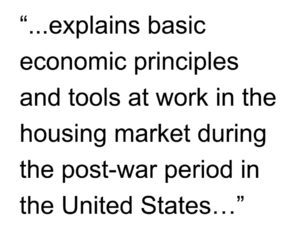 self-deluding assumptions underlying the housing and real estate market, which collectively sparked the Great Recession from 2008 until ‘to be determined’. The course is tailored for architecture, urban design and planning professionals, students, and others engaged in creating built environments to better understand the impact of these often unseen, poorly understood forces at work on their livelihood and the future of our cities (2.0 hour course).
self-deluding assumptions underlying the housing and real estate market, which collectively sparked the Great Recession from 2008 until ‘to be determined’. The course is tailored for architecture, urban design and planning professionals, students, and others engaged in creating built environments to better understand the impact of these often unseen, poorly understood forces at work on their livelihood and the future of our cities (2.0 hour course).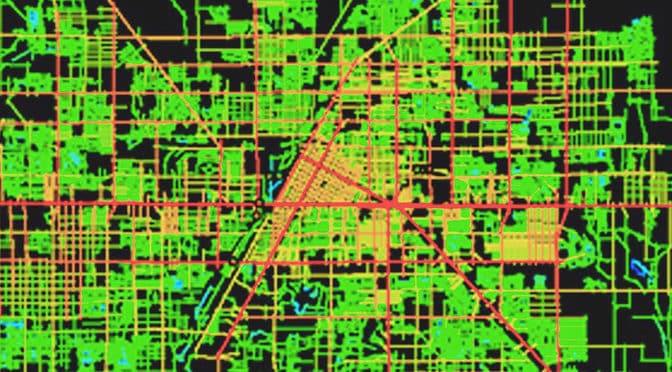
 The course covers the financial, institutional, and legal hurdles/pitfalls confronting space syntax in the American market, especially in the private sector. Using a series of ‘back-of-the-napkin’ financial calculations common to the American development process, the course demonstrates how these challenges can transform into a distinct advantage for advocating the cause of the space syntax in the United States. The course concludes by discussing the enormous challenges and opportunities for space syntax in America today (1.0 hour course).
The course covers the financial, institutional, and legal hurdles/pitfalls confronting space syntax in the American market, especially in the private sector. Using a series of ‘back-of-the-napkin’ financial calculations common to the American development process, the course demonstrates how these challenges can transform into a distinct advantage for advocating the cause of the space syntax in the United States. The course concludes by discussing the enormous challenges and opportunities for space syntax in America today (1.0 hour course).
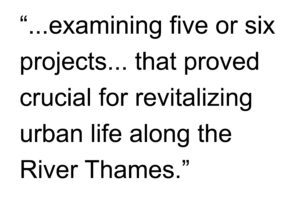 The course narrowly focuses on one particular aspect of redevelopment in that city over the last 25 years by examining five or six projects (depending on how they are parsed) on three sites from Westminster Bridge in the southeast to Tower Bridge in the northwest that proved crucial for revitalizing urban life along the River Thames (1.0 hour course).
The course narrowly focuses on one particular aspect of redevelopment in that city over the last 25 years by examining five or six projects (depending on how they are parsed) on three sites from Westminster Bridge in the southeast to Tower Bridge in the northwest that proved crucial for revitalizing urban life along the River Thames (1.0 hour course).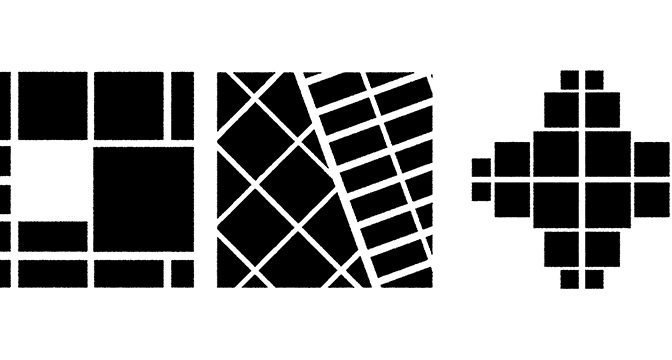
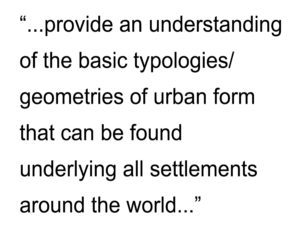 All cities utilize these (usually geometric) properties, though the scale at which they are realized will tend to vary during urban growth in defining a distinctive spatial culture. The purpose is to provide an understanding of the basic typologies/geometries of urban form that can be found underlying all settlements around the world, to one degree or another (1.0 hour course).
All cities utilize these (usually geometric) properties, though the scale at which they are realized will tend to vary during urban growth in defining a distinctive spatial culture. The purpose is to provide an understanding of the basic typologies/geometries of urban form that can be found underlying all settlements around the world, to one degree or another (1.0 hour course).